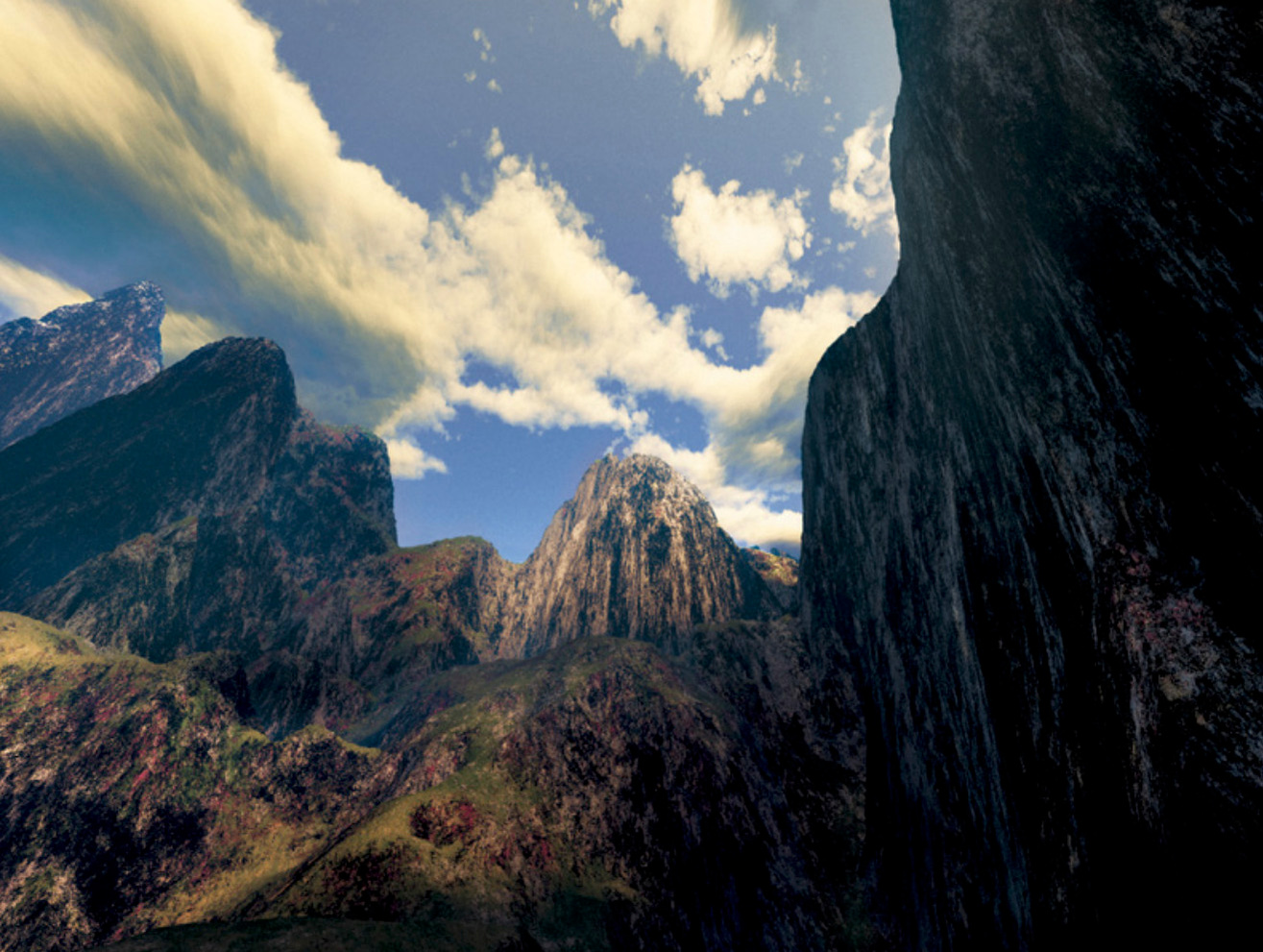Evaluating Practice: Daniel Gustav Cramer’s Series Trilogy
PHO702 Contextual Research / MA Falmouth University
Daniel Gustave Cramer’s Trilogy choice of images in Trilogy represents probably a tight selection of images from the work he made during this series. Each image has been created specifically to address his ideas behind the project and seems to be successful in capturing the attention of the viewer and holding them there questioning the images and their use of visual abstraction and ambiguity. The images often feel inaccessible to the viewer throughout the series due to their lack of foreground and dense nature dominating the frame.
Fig 1: Underwater #1. Daniel Gustav Cramer. 2005
However out of the eight images that make up the series Underwater #01 (one part of Trilogy) the photograph allows the viewer in by letting the image have a foreground, middle and background exist in the photograph giving depth to the image. It also is less ambiguous than the other images in the series and depicts nature as an indexical trace of an underwater cave in which we can identify and therefore understand what we are looking at undermining the methodology of the rest of the series.
In the other images we question the indexical truth of the image as a trace of the real, these images conceal their context, time history, and the trace of man and successfully use the camera to abstract the subject, woodland, ocean, mountain, and instead see a force of nature, a question of the influence of man in the picture making, the camera instead of a mechanical operator and depiction of the real.
Fig 2: Landscape Without Memory, Joan Fontcuberta, 2005.
To paraphrase Roland Barthes in Camera Lucida there has to have been a necessarily real thing which has placed before the lens, without which there would be no photograph. This of course in the modern era of computer technology is also being questioned. If we look at the work of Joan Fontcuberta and his series From Landscape Without Memory (2005) which questions the idea of indexicality in the image of the modern era as a trace of the truth by creating a landscape that cannot be authenticated due to its lack of history, time and real place. The 3D rendered landscapes question the authorship of the photographs also the AI of the computer interpreting the scene much like we do in landscape photography itself, cropping, viewing, constructing the image makes us question here who owns the work.
“Debating nature of truth in photography, photographs have been conveying the idea of evidence, but this is just a convention, this is just a belief, images are just constructions as any other human product” (Fontcuberta, 2015).
Fid 3: Trace 2, Liquidation, Ori Gersht, 2005
The work of Daniel Gustav Cramer similarly reminds me of Ori Gersht’s Liquidation in which he abstracts the frame to depict landscapes of the forests of the southwest region of Ukraine. As Ori says “Behind the evident beauty of the landscapes lurks an ominous past” (Gersht, 2005) referring to his Father in law who survived the German occupation by hiding for two and a half years in the space bellow the floorboards in a house depicted.
The text as discussed in this lecture is equally as important as the images and to paraphrase Steff Cosgrove once you’ve read the text and seen the images you can’t un see what you’ve learnt (Cosgrove, 2021).
The romanticism and painterly influences of the photographs which abstract the landscape with their lens blur not letting the viewer into the images is a almost hiding of the human trace or his father-in-law in the landscape. Though they also call into question the use of the photograph as an historical trace of human memory to reflect upon a situation that happened a long time ago and tell the truth.
Untitled. Road To Nowhere, Henry Woide. 2021
Abstraction and flatness which are traits of the medium of the photograph can be used effectively in my work Road To Nowhere to speak about the image as a trace of reality but do not reveal the full picture, through the narrative of the pictures and text my journey through the landscape starts to slowly reveal itself to the viewer. The ability for the frame to not leave space for the viewer to picture themselves in the scene but rather be confronted by it and question why and what is the photograph telling me about this story and it’s ability to conceal the truth more than it reveals. It could allow me to let the viewer question the landscape. Using signs and symbols in my photographs I can start to depict ideas around the right to roam and the inaccessibility of private land.
Bibliography:
Fig 1: Fig 1: Underwater #1. Daniel Gustav Cramer. 2005
Fig 2: Landscape Without Memory, Joan Fontcuberta, 2005.
Fig 3: Trace 2, Liquidation, Ori Gersht, 2005
Fontcuberta, Joan (2015) From National Media Museum Stranger than Fiction Exhibition (WWW) https://www.youtube.com/watch?v=m5zxDX77gho
Barthes, R. (1981). Camera lucida: Reflections on photography (1st American ed.). Hill and Wang.
Gersht, Ori (2005) Liquidation (WWW) https://www.origersht.com/copy-of-time-after-time-2006-m
Cosgrove, Steph (2021) Informing Context Lecture, Falmouth University



